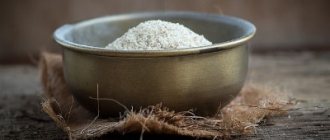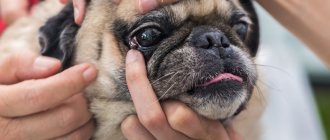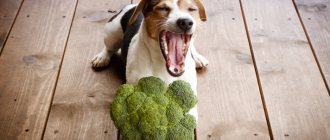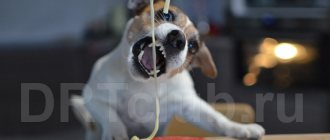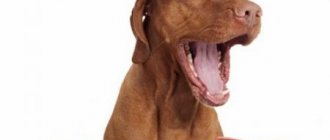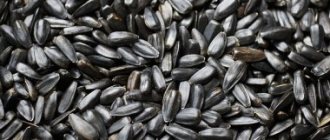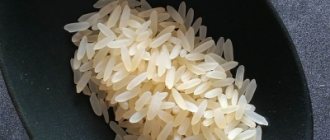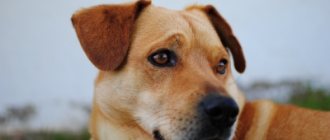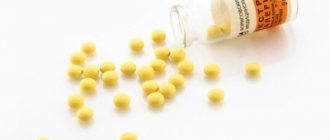More and more dog owners are switching to natural feeding, because the negative impact of dry food on the health of their pets has already been proven.
Typically, a natural diet includes cereals, soups, meat and dairy products, and the main ingredient that gives volume is cereals. But you should know that not all cereals are useful for dogs , their body is different from the human, and what gives us health can be deadly for an animal.
Trying to diversify the dog's feeding, the owner prepares porridge from different grains, and sooner or later it comes to corn. This is where the question arises: can a dog eat corn or corn porridge?
Role in diet
Human
Everyone loves corn porridge, and this is not without reason, because corn is a storehouse of nutrients necessary for full life.
It contains a large amount of vitamins, carbohydrates, minerals and vegetable protein.
Regular consumption of this bright porridge prevents the development of atherosclerosis and hypertension, normalizes metabolic processes in the body, and normalizes intestinal function. Information: Corn grits do not contain gluten, so they are ideal for people suffering from celiac disease (gluten protein intolerance).
It also does not cause allergies and is therefore ideal for baby food. Corn in any form has high nutritional value for humans; it does not lose its properties even after heat treatment, but the dog’s body is simply not adapted to digest it . And if he can more or less cope with boiled corn porridge, then raw corn on the cob is a sure problem.
Dogs
Corn is, first of all, easily digestible carbohydrates; 100 grams of corn contains 60 grams of carbohydrates, and it is they that determine the highly nutritional properties of this cereal. And dogs, carnivores, get most of their energy from animal protein and fats, while carbohydrates provide them with an average of only 25% of their energy.
This suggests that corn has no nutritional value for dogs . Consequently, corn cereals, especially in large quantities, are a source of huge amounts of unnecessary carbohydrates.
Harm from excess carbohydrates
A dog's diet requires careful selection of foods and maintaining a balance between weight and energy value. Easily digestible carbohydrates, which enter the body in excess with corn porridge, remain unspent and are converted into fat reserves, and also inhibit the intestinal microflora , triggering the processes of fermentation and putrefaction. This is how the dog develops dysbiosis.
The condition of the intestine, which is the leading organ not only in the digestive system, but also in the immune system, directly affects the overall health of the pet .
Dysbiosis in the intestines, which is caused by dietary disturbances, can cause the development of a host of secondary health problems , such as a tendency to allergies, disruption of internal organs, the occurrence of a number of chronic inflammatory diseases and obesity, often associated with each other.
Dysbacteriosis also aggravates the course of many concomitant diseases, significantly exacerbating them. Symptoms of dog intestinal dysbiosis:
- vomit;
- diarrhea;
- bloating;
- lethargy;
- loss of appetite;
- irritable bowel syndrome.
The benefits of fiber
For a full life, dogs need complex carbohydrates (fiber) , a completely different type, those found in vegetables and bran and not absorbed by the animal’s body. It is complex carbohydrates that create healthy microflora in the dog’s intestines.
Although fiber is practically not absorbed by the body, it is simply necessary for the normal functioning of the gastrointestinal tract . Fiber ensures the movement of food through the gastrointestinal tract and the excretion of feces. In addition, it controls blood sugar levels.
Corn porridge in no way should be the main part of the diet, but occasionally, as a supplement and in small quantities (maximum 20% of the total serving), they can still be given to a dog, there will be no particular harm. When the corn content in porridge increases, there can be no question of normal microflora in the intestines.
Varieties
Raw on the cob
Dogs love to chew on corn on the cob, but once in the stomach, raw corn kernels swell, significantly increasing in size.
Undigested particles descend into the lower parts of the digestive tract and can cause intestinal blockage, which is, at best, constipation, and at worst, volvulus and painful death .
Also, a pet can easily choke on a cob, so it’s better not to let your pet near them at all.
Boiled
Just like baked corn, raw corn is safer, but since it is completely indigestible , there is no point in giving it to your dog.
Canned
Corn is usually canned with vinegar, spices, salt and sugar and is therefore a good idea to avoid in your dog's diet.
What cereals can be given to dogs of small and large breeds
For some reason, people very often believe that the choice of cereals is different for large and small breeds. This is wrong. Buckwheat and oats (rolled oats) are best suited for the diet of both large and small dogs. But it is better to avoid corn, semolina and some other cereals. We have already written about all this in the relevant sections of the article.
From the author. We feed our Irish Setter exclusively natural food. For breakfast we give cottage cheese and kefir. And for dinner, porridge and meat, usually rolled oats, less often buckwheat.
If the animal has eaten too much corn porridge
If your pet has eaten just a little corn porridge, there should not be any terrible consequences, but excessive consumption of this product can cause tympany. Tympany is severe bloating of the stomach ; it occurs as a result of an animal eating low-quality or gas-forming products.
Main symptoms: the animal clearly looks sick, is depressed, sits motionless and breathes heavily, the abdomen is greatly enlarged, and a drumming sound is heard when tapped.
In such cases, measures should be taken immediately - give the animal a warm soapy enema, give activated charcoal and vigorously massage the stomach. Also, to get rid of excess gases, you need to make the animal move.
In especially dangerous cases that pose a threat to life, the animal is punctured in the stomach and gases are released.
Important! This operation can only be performed by a doctor in a veterinary clinic, and it is undesirable to delay a visit there, because the death of the animal can occur a few hours after the first symptoms of the disease appear from gastric rupture or autointoxication.
Symptoms of Corn Poisoning in Dogs
You can feed your dog corn porridge, but not often. Otherwise, the gluten from the product will remain on the intestinal walls, it will begin to clog, which will cause serious problems, including gastritis, colitis, and volvulus. Eating a large amount of food at once will lead to bloating; symptoms of the disorder are:
- nausea and vomiting;
- diarrhea;
- decreased appetite;
- elastic belly;
- pain in the abdominal area;
- the animal moves little, breathes heavily;
- flatulence.
Is it worth giving cereal dishes at all?
In addition to protein, a dog’s diet must contain fiber, so it’s still not worth giving up cereals completely. Not all cereals are suitable for their preparation; a healthy diet is, first of all, a strict selection of foods and grains, this also applies. The healthiest grains for dogs are rice, buckwheat and oatmeal, and they can easily replace harmful corn grits.
Rice contains B vitamins, vitamin E, iron, calcium, magnesium. Ideally, you should feed your dog unpolished rice , because it is in the shell of the grains that most of the nutrients are present.
It is also a natural sorbent; it absorbs various toxins and wastes and removes them from the body.
Buckwheat is the most healthy of all cereals. It helps fight obesity, strengthens bones and is simply irreplaceable for the dog’s nervous and circulatory system.
Help : rice and buckwheat must be cooked until crumbly.
Oatmeal (rolled oats) is useful both raw and steamed. Rolled oats steamed with hot water are a slimy liquid that has a healing effect on gastric digestion. Oatmeal proteins have a positive effect on the functioning of the animal’s liver and heart.
What can you cook with - recipes
The owner must know how to cook porridge correctly so that it does not harm the body. Salt and spices are prohibited. It is recommended to add vegetable oil to the porridge. It is better to cook a mixture of cereals. For example, rice leaches calcium, so it is cooked with millet or buckwheat. Vegetables, fruits, and fermented milk products are added to porridges.
It is not recommended to cook cereals in fatty meat broth, as it puts additional stress on the liver. You can take water, vegetable broth or half the meat broth mixed with water. Meat should be purchased of high quality; sometimes it is replaced with offal. They are boiled in a separate bowl and mixed with porridge immediately before serving.
Some dog owners boil meat products and freeze them along with the broth. In this case, you need to defrost it and cook the cereal.
Boil the by-products well before serving.
As for vegetables, it is healthier to take carrots, zucchini, beets and onions. They need to be simmered until completely softened; you can also add a few raw pieces.
Porridge with meat and vegetables
Ingredients:
- 1 kg of meat (depending on the weight of the dog);
- water;
- 130 g rice cereal;
- 1 carrot;
- 0.5 zucchini.
The meat is boiled well in water, pulled out and left to cool. The washed cereals are placed in the broth (a little salt is allowed) and, stirring constantly, cook. When the broth boils, add finely chopped vegetables. Add chopped meat, a little herbs and vegetable oil (to taste) to the cooked porridge. Serve the porridge warm.
Porridge with trimmings and vegetables
Ingredients:
- 1 kg beef trimmings;
- 0.5 cups rice;
- carrot;
- zucchini;
- pumpkin;
- cucumber;
- bell pepper;
- greenery;
- vegetable oil.
Beef trimmings are placed in boiling water (this way it retains vitamins better), after boiling, cook for about 20 minutes. At this time, rice is boiled separately. Before serving, rice, broth, vegetable oil and meat are mixed, adding fresh vegetables.
Multikasha
Ingredients:
- 300 g meat;
- 300 g of lung or heart;
- 0.5 cups rice;
- 0.5 cups buckwheat;
- carrot;
- 0.5 zucchini;
- 0.5 pepper;
- tomato;
- greenery;
- vegetable oil.
The meat is boiled for 20 minutes, the resulting broth is filtered. Vegetables and lung (heart) are chopped. The ingredients are placed in the broth and cooked for another 20 minutes. Finely chopped herbs and vegetable oil are added to the finished porridge.
Chicken with rice
Ingredients:
- chicken;
- rice cereal;
- carrot.
Cut the chicken, add water and cook until done. Boil rice in another bowl. The finished chicken is deboned and ground into minced meat. Grate carrots. All ingredients are mixed, vegetable oil is added.
Apple with oatmeal
Ingredients:
- apple;
- 1.5 cups flour;
- 1 cup oatmeal;
- 0.5 glasses of water;
- 2 tbsp. l. honey
The apple is grated, water, honey and oatmeal are added. Mix everything thoroughly and add flour. The resulting dough is rolled out like a flat cake, laid out on parchment, and cut into pieces. Bake in the oven for about 30 minutes.
Porridge with fish and vegetables
Ingredients:
- fish;
- buckwheat grain;
- pumpkin;
- water.
The fish is placed in boiling water and cooked until tender. Then it is taken out, cleaned of bones, and crushed. Place cereal into the resulting broth and boil it. 5 minutes before readiness, add chopped pumpkin to the porridge. Add fish and vegetable oil to the porridge that has cooled to room temperature.
Porridge "Health"
Ingredients:
- take rice, egg, buckwheat and oatmeal in equal proportions;
- chopped meat;
- powdered milk;
- water.
The cereals are washed, mixed and poured with boiling water. Bring to a boil, remove from heat, leave for about 12 hours (it is better to cook in the evening). The minced meat and milk powder (diluted with water) are mixed, added to the cereals and put in the oven to simmer for two hours.
Vegetables
Vegetables are primarily fiber, and dogs need them as slow carbohydrates, as a source of rough dietary fiber and to create optimal microflora in the intestines, that is, they help better digest the main food - meat.
The selection of vegetables is an individual matter ; you should monitor your pet and include the most suitable ones in the diet. If, after consuming a reasonable amount of a certain vegetable, the dog does not develop an allergy, and the stool is well formed, this vegetable can easily be included in the menu without worrying about the terrible consequences.
But you shouldn’t get carried away with experiments ; various exotics are generally not appropriate. The three most popular vegetables in a dog's diet are carrots, pumpkin and zucchini.
Is celiac disease a death sentence or not?
Today, there is a proven method for determining gluten intolerance in dogs - an allergy test to detect antibodies to gluten in the blood serum. If such antibodies are detected in the dog during testing, then it is given a disappointing diagnosis called “Celiac Disease” or “Enteropathic Gluten Sensitivity.”
From this moment on, all products containing gluten must be excluded from the dog’s diet. And there are not as few of them as we think. The list of prohibited products includes:
- All cereals, except buckwheat.
- Canned food/sausage/sausage.
- Bakery products.
- Concentrated soups.
- Chocolate products.
- Nuts.
This list can be continued almost endlessly.
There are two ways out of a situation where a dog has discovered gluten intolerance:
- Keep her on a gluten-free diet at all times;
- Switch from natural food to gluten-free dry food.
As the practice of John Symes has shown, switching dogs to a gluten-free diet completely relieves the unfortunate animal of major pepper problems. The main thing in such nutrition is constant maintenance and avoidance of breakdowns.
Other types of products
- Popcorn is absolutely useless food for dogs; a small amount of it will not cause significant harm, but can cause digestive upset.
- Corn flakes are dangerous, because the corn mass, before being fried and becoming flakes, is abundantly fertilized with various chemical additives that are completely undesirable for any animal.
- corn sticks also contain a lot of sugar; the dog’s body is not equipped to digest it, and therefore a strong allergic reaction is possible.
